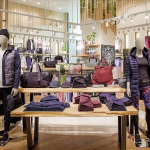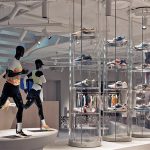The 2005-2006 SnowSports retail season was like many of the past few years, strong in certain parts of the country and difficult in others. However, at least this year every major ski area was able to open for business for most of the season, unlike last year, when resorts in the Pacific Northwest never received enough snow to start up the lifts. This year, the Northeast drew the short straw in the weather lottery and reported tough conditions during key holiday weekends that were detrimental to not only resort visitation and skier days, but also the retail environment.
According to the SIA retail audit conducted by The Leisure Trends Group, overall sales for the entire SnowSports market, were up 4% in dollars to $2.3 billion for the August 2005 through March 2006 period, compared to $2.2 billion reported last year.
Sales at Chain stores were up 6% to $538.8 million this season as compared to $508.1 million for last season. Sales at Specialty ski and snowboard shops were up 4% to $1.8 billion this season as compared to $1.7 billion for last season.
At Specialty SnowSports retailers, ski hardgoods continue to be dominated by the success of the twin-tip market and the smaller success of the fat powder ski. While overall equipment sales fell 5% during the 05-06 Season, freestyle twin-tip ski sales jumped 59% in dollars and fat ski sales jumped 45% in dollars with a considerable increase in average selling price. The “super-fat” subcategory of skis saw even more success, with 144% sales growth during the season.
While integrated ski systems now account for over 90% of all new skis sold, stand-alone skis continue to see increases in average selling prices, climbing 7% or $23 this season.
Specialty retailers were able to keep equipment selling prices relatively stable this year, with ASPs for integrated ski systems and ski boots slipping only $1. Overall ski ASPs increased 3% for the season. In addition, carryover sales decreased considerably this year in nearly every category at Specialty retail. This was primarily due to much lower inventories of carryover equipment compared to last year.
Snowboard equipment sales continued to bounce back nicely form their slight stall last year. According to Leisure trends, Snowboard Specialty retailers were 69% sold through in equipment, with inventories of snowboards 17% below last years levels. Similar to the trends in the ski market, freestyle equipment is driving the category with a 21% increase in sales. In addition, carryover snowboard sales are down from last year, accounting for 5% of sales compared to 13% last year. Higher ASPs in bindings and boots pushed sales up in both categories by 4% as manufacturers use more technology and dream up more value-added features to improve the performance and increase the price.
Apparel sales were the primary driver behind the overall growth in the Specialty SnowSports market this year with a 7% increase in sales. The increases were primarily driven by large unit increases in softshell top sales, which were partially offset by dramatically lower average selling prices in the category. Many other categories enjoyed solid double-digit growth during the season, including Hard-shell tops, junior shells, and fleece.
Snowboard apparel sales also experienced a banner year, with a 10% increase in ASPs driving a 15% sales increase. Snowboard top sales increased 22% in the unisex category while womens tops increased 26% in dollars. Sales of Snowboard bottoms increased 19%.
Chain retailers saw many of the same trends, with sales primarily driven by high-single-digit increases in apparel and Snowboard equipment, while alpine equipment sales slipped 2% for the year. Fat ski sales were up 17% and twin-tip skis more than doubled their sales with a 114% increase.
In addition, SIA began tracking on-line sales this year. While the projection model has yet to be formally calculated, preliminary findings from tracking sales through the Internet distribution channel show roughly $260 million in SnowSports products were sold online this season. Same store sales point to a 13% increase.
Overall, both Chain and Specialty retailers seem to be finishing the season with lean inventories and few carry-overs for next year. This should translate into a solid sell-in for the 2006-2007 season, but the final results, as always will depend on the weather.
| SIA Snow Sports Retail Audit | ||||
| 2006 August-March Results | ||||
| (Select Equipment & Apparel Categories) | ||||
| (in $ millions) | Chain | 06/05 | Specialty | 06/05 |
| Stores | Change | Stores | Change | |
| Total | $538.8 | +6.1% | $1,798.8 | +3.9% |
| Equipment | $146.4 | -2.0% | $616.0 | -1.1% |
| Alpine | $67.4 | -6.0% | $374.1 | -1.5% |
| Nordic | $3.3 | -46.0% | $28.8 | -17.0% |
| Telemark | $1.6 | +18.0% | $5.3 | -19.6% |
| Randonee/AT | – | – | $1.5 | -13.5% |
| Snowboard | $73.7 | +7.0% | $206.2 | +3.1% |
| Apparel | $213.5 | +7.0% | $582.7 | +6.6% |
| Alpine | – | – | $485.8 | +5.2% |
| Snowboard | – | – | $97.0 | +14.6% |
| Accessories | $178.9 | +12.0% | $600.0 | +6.7% |













